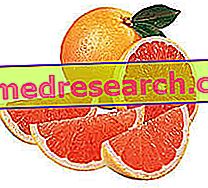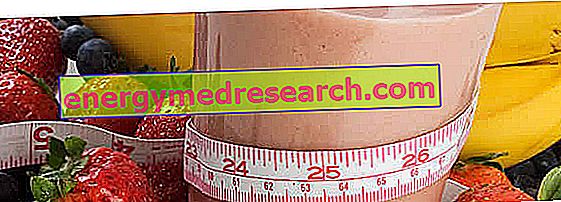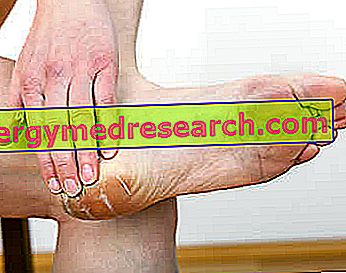What is Pectin?
Pectin is an indigestible carbohydrate, a polysaccharide with a structure contained in the cell walls of plant tissues. Formed mainly by a linear chain of galacturonic acid monomers, held together by α- (1-4) bonds, pectin is in effect a soluble fiber. Most people know it for its use in the preparation of jams and fruit jellies, but it also has very interesting dietary virtues.
Every day, we ingest a few grams of pectin (2-6 grams in relation to eating habits), extracting it from fruits and vegetables, in particular from apples, plums, citrus fruits, quince and gooseberry; the richest source of all is the white skin - called albedo - which remains around the citrus fruit after removing the peel.
| Pectin content in some fruits (% on fresh weight) | |
| apples | 1-1.5% |
| Apricot | 1% |
| Cherries | 0.4% |
| oranges | 0, 5-3, 5% |
| carrots | 1.4% |
| Citrus peel | 30% |
This explains why nutritionists give a clear preference to whole fruit compared to juices and fruit juices, particularly rich in sugars and poor in fiber.
The different concentration of pectin in ripe fruits explains why some of them produce jellies of excellent consistency, while others produce rather liquid jams, making it necessary to add pectin powder or other fruits that are particularly rich (apples quinces and citrus peels). In this respect, the ability to form high consistency gels is superior for unripe fruits, since in mature ones there is a high degree of enzymatic hydrolysis of pectins.
What is it used for?
On an industrial level, pectin is obtained from natural sources, such as apples, pomace, citrus fruit white and in general from by-products from juice extraction.

Pectin and Intestine Health
The gelling and emollient properties of pectin are very useful for regularizing intestinal functions. In the presence of diarrhea, just like when the jam is too liquid, pectin increases the consistency of the stool; instead, in the presence of constipation - as long as it is accompanied by the right amounts of water - it can promote intestinal transit, giving greater softness to the fecal mass and relaxing the colic walls (an important stimulus to peristalsis and evacuation).
Pectin and High Cholesterol
Pectins are also used to prepare medicines that limit regurgitation, but their main health application is diet. At the intestinal level, this substance - which we have seen to be almost indigestible, therefore non-absorbable - traps a certain amount of bile acids, hindering their reabsorption and favoring their elimination with faeces. These components of bile, synthesized starting from cholesterol, play a leading role in the processes of digestion and absorption of lipids. Therefore, a drug or an integrator capable of limiting the intestinal reabsorption of bile acids stimulates the new synthesis of the same; since this process uses cholesterol present in the body, these products reduce the concentrations of LDL cholesterol in the blood, slightly increasing the HDL fraction. This is the case of bile acid sequestering resins (Ezetimibe) but also of pectin, which therefore plays a very important role in the prevention of atherosclerosis and associated diseases (ischemic heart disease, myocardial infarction, stroke, peripheral occlusive arterial disease, etc.).
Pectin as a Prebiotic
The intestinal metabolism of pectin by the resident bacterial flora, in addition to favoring the proliferation of beneficial germs and indirectly obstructing that of pathogens, gives rise to short chain fatty acids, which nourish the intestinal mucosa and can further decrease LDL cholesterol in the blood, as well as preventing colon cancer.
Pectin and Diabetes
The reduction in cardiovascular risk attributed to a diet rich in pectin is also linked to its ability to trap sugars in the intestine, slowing its absorption. The stability of glycemic levels is very important in the prevention of type II diabetes and hypertriglyceridemia.
Doses and Mode of Use
The pectin dosaggides used in the studies that have confirmed the above-described properties, are around 15 grams per day.
Normally, however, it is not necessary to resort to a specific integration, unless the doctor or other professionals explicitly recommend its use; rather one must become aware of the importance of adequate consumption of fruit and vegetables (on the whole at least 5-6 portions a day), which in addition to being rich in pectin contain many substances with synergistic activity.
In fact, obtaining 10 grams of pectin by eating two apples and an orange a day is in fact a much better choice than supplementing a low-vegetable diet with 20 grams of pectin.



